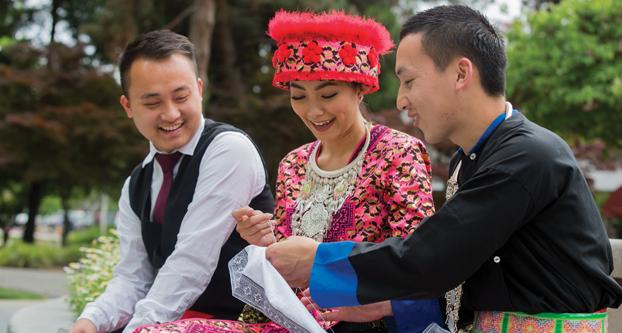The enrollment rate for Hmong students at Fresno State has doubled since 2011, making the ethnic group one of the few to have a dramatic enrollment increase.
In fall 2011, there were 790 Hmong students enrolled, and as of fall 2015, there are 1,534 Hmong students attending Fresno State.
“When we look at school data — K-12, high school data and even community colleges — there is a growing pipeline of Hmong and Southeast Asians in public schools and graduating from community college and transferring,” said Dr. Angel Sanchez, associate vice president of the office of institutional effectiveness (OIE).
According to OIE statistics, there were 322 freshmen Hmong students in fall 2011 and 301 in fall 2015.
Additionally, in fall 2011, there were 32 Hmong transfer and 57 in fall 2015.
A reason for the increase of Hmong students is because of the large Southeast Asian community.
“There’s not only population growth,” Sanchez said, “[Within] the demographics of the San Joaquin Valley, there’s a large Southeast Asian community that is growing in this region.”
He said since most of the Hmong population in the San Joaquin Valley are young children, birth replacement rate impacts the population rate.
“In order for a group or a population to replenish itself, demographers tell us the group needs a replacement rate of about 2.1 births for females,” he said. “And what that means is, is at that rate, births then replace those who die off, so it kind of stays even.”
Among Asians, the replacement rate is approximately 2.6, resulting in the number of Asian groups to increase, Sanchez said.
Fresno State students now have the opportunity to learn more about the Hmong heritage.
“I think that the enrollment is increasing because Hmong students want to learn their language as well as their culture,” said Zao Vang, a liberal studies major.
On April 22, Fresno State approved having Hmong as a minor, making Fresno State the first institution in the western U.S. to offer Hmong as a minor.
“In total, we have 20 units,” said Dr. Kao-Ly Yang, Hmong minor coordinator and adviser. “You have six courses to take in order to have the Hmong minor — five language courses and one cultural course.”
Yang said although the minor will be available starting fall 2016, there are 69 students who are already interested in minoring in Hmong and 20 students who will be ready to graduate with the minor by spring 2017.
“They took all the courses already. They just need to take the cultural course,” Yang said. “[And] they just need to fill the application form for a minor, and that’s it.”
By minoring in Hmong, students will have the opportunity to potentially use their Hmong language skills to teach Hmong in middle school or high school and to use it as a communication tool for careers such as nursing and business, Yang said.
“Students can benefit by using the minor to apply for jobs in Fresno because Fresno has a large population of Hmongs,” said Lisa Lee, a kinesiology major. “Students can also use it as a tool to understand why the Hmong [community] came to the U.S.”




